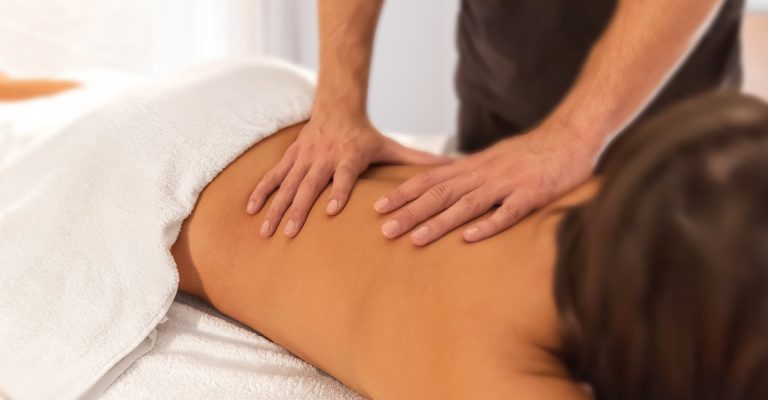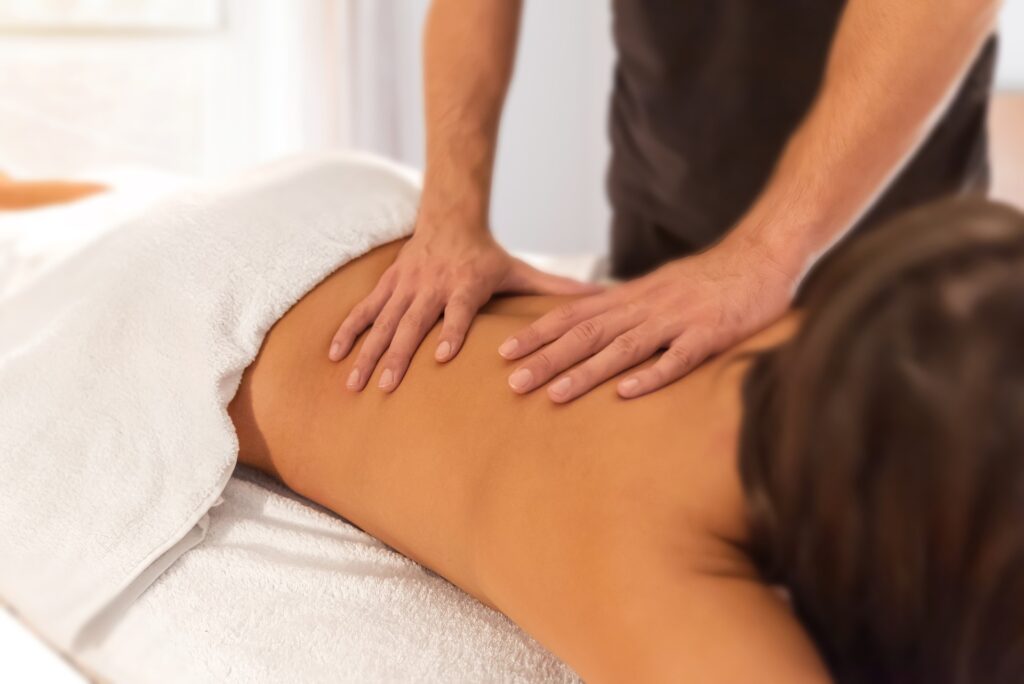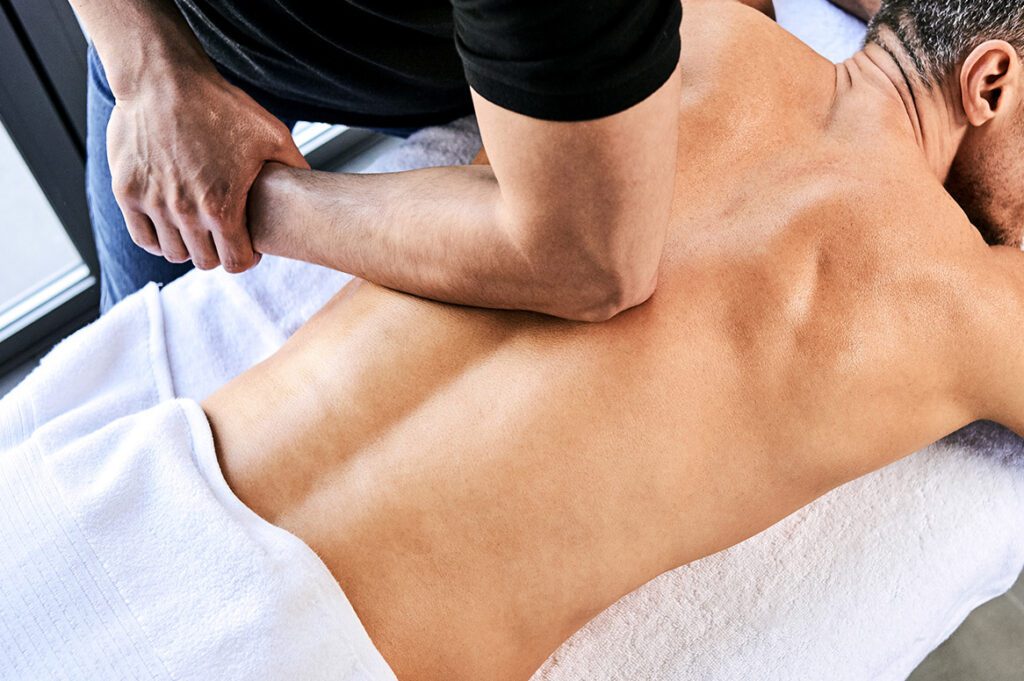
Massage treatment has the potential to provide significant healing and pain reduction for a wide variety of lower back conditions. To be more specific, when the relevant muscle is addressed, the pain can be treated at its source, which results in faster and longer-lasting relief. This is the case for back pain caused by a strained muscle.
Your lower back and hips are stabilized and supported in large part by two major muscles: the quadratus lumborum and the gluteus medius. Both of these muscles are located in the buttocks. When the biomechanics of these muscles are altered as a result of strain or fatigue, it can lead to a number of different problems, including pain in the lower back, stiffness, and/or a reduction in mobility.

Your lower back is primarily supported by a muscle known as the quadratus lumborum, which is composed of multiple layers. This muscle is an extensor of the spine, which means it allows you to bend your body in a flexed position. Additionally, the muscle assists in bending your body to the side.
When you perform certain activities throughout the day, such as the following, the quadratus lumborum muscle is at risk of becoming fatigued, stiff, strained, and/or uncomfortable.
Your quadratus lumborum may be hypertonic (tight) if you are experiencing severe, stabbing, or urgent discomfort in your lower back. You can experience a dull, continuous aching along with a certain degree of stiffness from time to time.
Lower back discomfort can also be caused by the quadratus lumborum muscle if it develops painful trigger point nodules, if it causes entrapment of nerves within its fibers, or if it is directly traumatized, all of which are possibilities.
In order for your therapist to successfully alleviate your lower back discomfort, the muscle in question needs to be stretched and massaged at the same time.

The gluteus medius is a muscle that can be found in the posterior hip or buttocks. This muscle is known as an abductor of the hip, and it gives you the ability to elevate your thigh and leg laterally, such as when you are getting out of an automobile. It is also responsible for maintaining the level position of your hips when you are standing on one leg, which is an important component of the gait cycle that occurs when you are walking. There is a close relationship between the biomechanics of the hip and those of the spine; if there is an issue with your hip muscles, you may experience pain in your lower back.
Pain in the gluteus medius muscle can be brought on by an imbalance and/or weakening two brought on by a variety of factors, such as the following:
Pain in the gluteus medius muscle typically manifests itself in the lower back and buttocks. It’s also possible that the discomfort is radiating toward the back of your leg. It is also typical to experience stiffness and weariness, both of which can limit the range of motion in your lower back and/or your ability to walk.
If you choose to receive massage therapy for lower back discomfort, make sure to tell your therapist to put extra emphasis on the quadratus lumborum and gluteus medius muscles. The efficient functioning of the body depends on the interconnection between the muscles in the hip and lower back. Unless a particular muscle is harmed as a result of direct trauma, it is more likely that the entire set of muscles will be affected by tiredness, stress, and altered function. This is because direct trauma can only hurt one muscle at a time.
There is a good chance that your massage therapist is knowledgeable about the muscles that contribute to back discomfort. If you have any reason to believe that your discomfort is the result of muscular dysfunction, though, you shouldn’t be afraid to speak up and specifically seek this kind of massage.
There are many different kinds of massages that may be done on your lower back. Some of them can be performed successfully at home, while others require the expertise of a trained specialist.

Using only a few simple pieces of equipment, you are able to give yourself a back massage.
Give this a try:
There are two categories of back pain, and you may differentiate between them based on how long you’ve been experiencing the discomfort.
The majority of people who experience acute back pain only have it for one to two weeks at the most. Acute back pain often goes away within a period of three months.
Massage therapy is listed as a potential treatment for acute back pain in the most recent clinical practice guidelines published by the American College of Physicians; however, the guidelines do not advocate massage therapy for patients who suffer from persistent back pain.
Despite this, you should still give massage a shot if you want some temporary relief from your chronic back pain.
However, following a year of treatment, those individuals who had massages in addition to other forms of care experienced the same level of symptoms as those individuals who did not receive massages.
Short-term benefits of massage therapy for chronic back pain include a reduction in the amount of time spent sitting in bed, an improvement in the capacity to participate in everyday activities, and a reduced need for medication to address back pain.